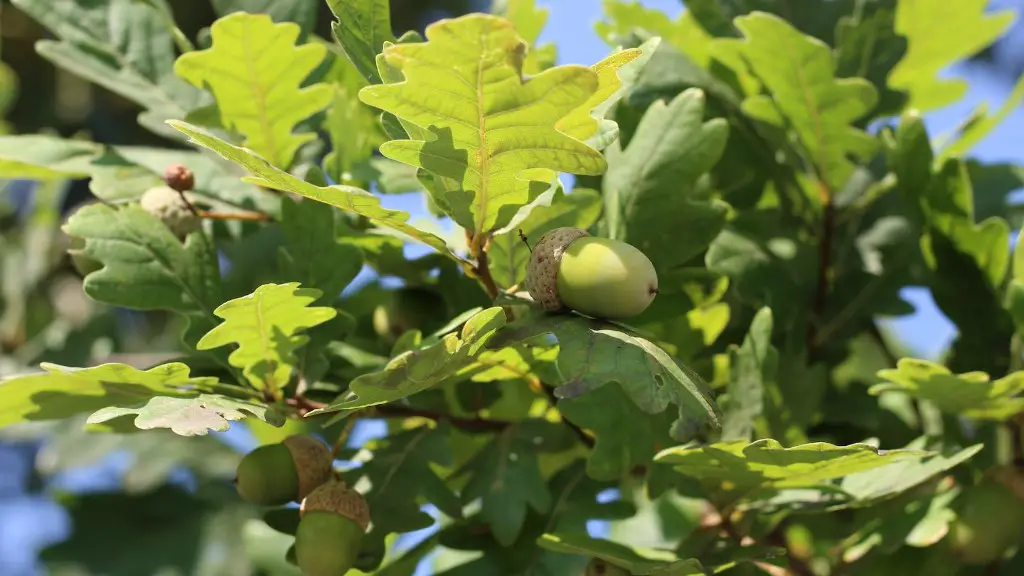Thinning apples on a tree is essential for a successful apple harvest. Here are the steps to follow in order to thin the apples on the tree in your orchard. Firstly, you need to assess the situation. You should count the number of apples per bud and determine which ones require thinning. Make sure that the apples you choose to thin are those that are defect-free and should be spaced evenly along the branch.
Secondly, use sharp pruning shears to cut off the apple of your choice. This should be done gently to avoid damaging the branch or the nearby apples. Cut the apple as close to the branch as possible and make sure that no residue is left on the branch. This will ensure that no fungal diseases contaminate the remaining apples.
Thirdly, thinning should occur in the early stages of apple growth, before the apple is the size of a dime. This will reduce the stress on the apple tree and make sure the apples develop properly. It will also reduce the competition between apples for essential nutrients.
Fourthly, only thin a portion of the apples on the tree. You don’t want to completely remove all of the apples, as this will cause too much stress on the tree. Instead, leave behind some of the healthier apples and just thin out a few of the small, unhealthy apples.
Fifthly, thinning apples will require more frequent pruning and management throughout the season. Make sure that the branches are healthy and free of dead wood and prune regularly in order to maintain tree shape and form. This will maximize fruit quality and result in a better harvest.
Lastly, the thinning process should be done on a regular basis. This is important in order to ensure that the tree is kept healthy and in order to promote better fruit production. Keep an eye out for any signs of stress or disease on the tree, as these can be caused by improper or excessive thinning.
Thinning Apples: Different Types of Pruning
Thinning apples can be done using different types of pruning. Hand thinning or manual thinning is the simplest and generally applicable type of thinning. Intensive decisions are required to properly thin a tree when manual pruning is used. Depending on the size of the tree and the bud productivity, up to two-thirds of the apple fruits can be removed.
Chemical thinning involves the application of certain chemicals that facilitate the thinning process. These chemicals are generally applied during late spring to early summer, when the fruits are approximately quarter of their size. It is important to use the right mix of chemical thinning agents in order to avoid causing damage to the tree.
In addition to the different methods of pruning discussed above, there is also mechanical thinning. This type of thinning is completed with a machine that removes the apples from the tree while they are still in the growing stage. The advantage of this method is that it requires little to no human interaction and can be done quickly and efficiently.
Tree manipulation is another method to consider when thinning apples. The practitioner uses tools and techniques to manipulate the branches of the tree, in order to adjust the shape and form of the tree. This can create a more desirable appearance, but can also create other benefits, such as improved air circulation and light distribution among the fruits.
Finally, water stress thinning can also be used to regulate apple fruit set. Water stress thinning involves reducing the amount of water supplied to the tree during the growing season. This can force the tree to regulate its fruit set in order to conserve energy, thus reducing the number of fruits on the tree.
Benefits of Thinning Apples
Thinning apples can have several benefits. Firstly, by removing some of the apples from the tree, the remaining fruits can grow better. The tree is not strained with all of the fruits, therefore it has more energy and resources to properly nurture those apples that remain.
Secondly, by removing some of the unhealthy and unnecessary fruits, you can make sure that the remaining apples are of good quality. This will result in better tasting apples and higher-value produce.
Thirdly, thinning apples also helps to regulate the size of the fruit. By removing some apples while they are still small, the remaining apples can grow bigger in size and be of higher quality. This can often result in larger and higher-value produce.
Finally, thinning apples also helps to reduce the amount of competition among the fruits for resources and nutrients. This can help to ensure that all of the fruits are of good quality and of similar size, and can greatly improve the produce’s value.
Tips for Thinning Apples
When thinning apples, it’s important to follow some guidelines in order to maximize success. Firstly, the process should be done in the early stages of growth, when the apples are still small. This will result in fewer fruits to thin and higher quality produce.
Secondly, pruning shears should be sharp and any residue should be removed from the branch. This will ensure that little to no damage is done to the tree and the remaining produce. It will also help to avoid any fungal diseases that might be caused by the leftover residue.
Thirdly, the process should only thin a portion of the apples on the tree. This will ensure that the tree is not overstressed and will reduce competition among the apples for essential resources and nutrients.
Fourthly, the process should be done regularly and in combination with other pruning methods. This will help to maintain the tree’s health and create better fruit quality for harvest.
Finally, keep an eye out for any signs of stress or disease. This can be caused by improper or excessive thinning, so make any necessary adjustments when thinning apples.
Varieties of Apples to Thin
Different varieties of apples require different levels of thinning. Firstly, varieties that are prone to biennial bearing, such as Granny Smith or Golden Delicious should be thinned more heavily in order to reduce the chance of alternate bearing. This should be done at the same time as chemical thinning.
For early-season varieties of apples, such as Jonathan or Ida Red, the thinning should not be as severe. This is because these varieties are more sensitive to competition, so the fruit should be spaced further apart in order to ensure good growth and quality.
For late-season varieties of apples, such as Rome Beauty or Stayman, the thinning should be done about a third of the way through the season. This is to keep the late-season apples from getting too close to the early-season apples, which can lead to reduced yields.
Lastly, more vigorous varieties of apples, such as Red Delicious or Braeburn should be thinned more severely. This will make sure that the tree is not overstressed and the remaining apples can receive sufficient nutrients.
Conclusion
Thinning apples is an essential part of successful apple production. There are many different methods to thin apples, as well as certain steps to consider and varieties of apples that require different levels of thinning. It is important to understand the process in order to ensure maximum fruit yields and quality.




